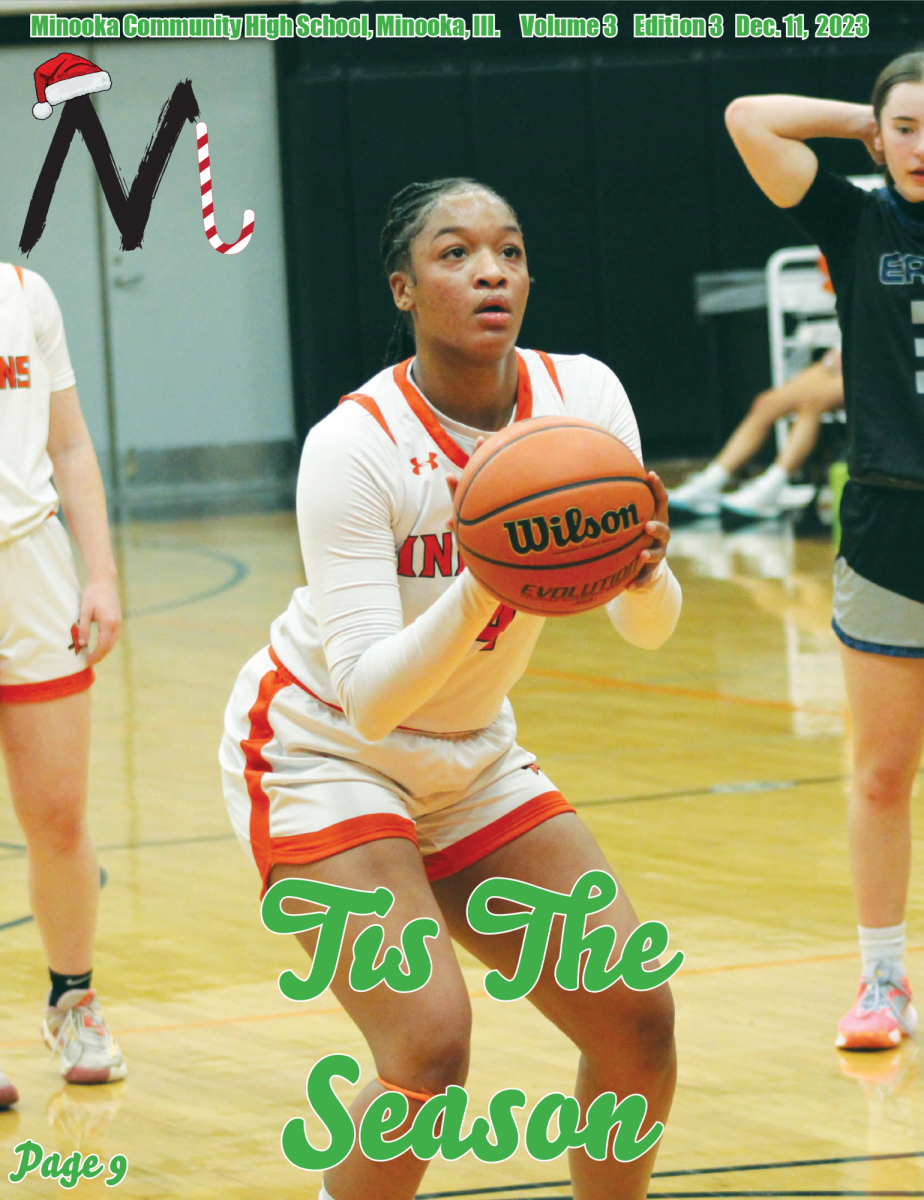Mr. Brad Dorick is a science teacher at MCHS. He teaches both AP Environmental Science as well as Physics. Outside of school hours, Dorick runs the school’s pollinator garden. This interview for Nook News has been edited for length and clarity.
Q: Can you tell me about your family history with Minooka?
A: My grandpa taught here in the 1950s and coached basketball here. There is a news article circulating around that he at one point was principal, but if it was, it was just an interim basis. Then my aunts and my dad went through here in the ’60s and ’70s as students. Then my brother graduated in ’98, and I graduated from here in 2001. Obviously, I teach here now and then my kids will go to this high school, so that’s four generations of us coming through this school.
Q: How long have you been teaching at Minooka?
A: This is my 14th year.
Q: What are some of your hobbies?
A: Fly fishing is number one, honestly, anything outdoors. I like to bike, hike, work out, that kind of stuff.
Q: What is the pollinator garden?
A: It is native Illinois prairie habitat. The purpose was because we got a grant and part of the grant was that we had to create a habitat for pollinators because of agricultural practices and urbanization we’ve destroyed a lot of that. So by bringing back the native vegetation prior to European settlement when indigenous people were here, we provide pollinators with a lot of the resources they need such as water, plants, host plants, nectar, that sort of stuff. The other thing is that it allows the students to see what tall grass prairies landscape would’ve looked like because there’s not much left, it’s actually one of the rare ecosystems of the entire world. It’s kind of nice that we have this at our fingertips to point out that this is what the land would’ve looked like prior to settlers.
Q: When was the pollinator garden started?
A: So we started in 2018 and it actually started as a corner right outside of my window here. Then we earned the grant in I believe 2019 and that allowed us to expand it to where it currently is. So now, we’ve added I want to say somewhere in the range of 3,000, maybe 5,000 plants. Actually, this fall and next week we have 500 more coming in. We are going on five or six years of this, it’s been kind of neat to see this evolve.
Q: How did you get involved in the garden?
A: I was the one to start it and before I became a teacher, during my senior year of college, I got an internship at Midewin Tallgrass Prairie in Wilmington. So that really got me started in all of this. And as I was getting my masters and then once I became a teacher, I would still work down there. I worked down there for about 13 years on and off.
Q: Why do you participate in the garden?
A: I’m the one who has the knowledge of what the native plant and ecosystem would’ve looked like from my time at Midewin. So, I was really happy to be able to do that and help bring it in front of students because they get a chance to see some things that if it wasn’t there, they wouldn’t know about it.
Q: Do you garden at home?
A: Yeah, we do have a vegetable garden which I’m not as big into, but I do have native prairie stuff all over my yard and a bunch of trees.
Q: About how many people help with the garden each year?
A: Every student who takes environmental science will. For example, this year, there will be about 150 kids involved. With volunteers on a good year, maybe 40 people join. On average, it’s probably in the range of 50 to 100 between students and volunteers.
Q: What plants do you keep in the garden? What’s their purpose?
A: The key thing is, is that they’re all native Illinois prairie species. If I looked at the list, there are over 40 species out there. The most common are milkweeds, little bluestem (a large prairie grass), drop seed, and then a lot of different flowers. The milkweeds are one of the main things because they are a host and food plant for monarch butterflies.
Q: Are the pollinators the only ones who use the garden? (In reference to animals.)
A: We have had ducks out there! We’ve had hummingbirds, gold finches, and other bird species.
Q: How does the pollinator garden help the school and the environment?
A: For the environment it lowers our carbon footprint. We don’t have to mow as much so we don’t have to use as much fuel. It helps put water into the ground because plants help water go into the ground. It increases biodiversity for plants and animals. For the school, it’s just a unique opportunity. I think a lot of people don’t know it’s there, but it’s a unique opportunity and there’s an aesthetic value, too. I think that’s something that’s really overlooked a lot of the time.
Q: Are the volunteers and students in environmental science the only ones allowed to use the garden?
A: No, by no means! And actually, if I could promote something, it’d be different classes that use it. Any class is welcome to use it. Students have to get permission, obviously, but all classes are allowed out there. It is not exclusive to the environmental science group.
Q: What are you most looking forward to this year?
A: For me personally, it’s looking to see how much I can improve the AP Environmental Science scores. I’d like to bring them from a 75% pass rate to hopefully in the 80s.















